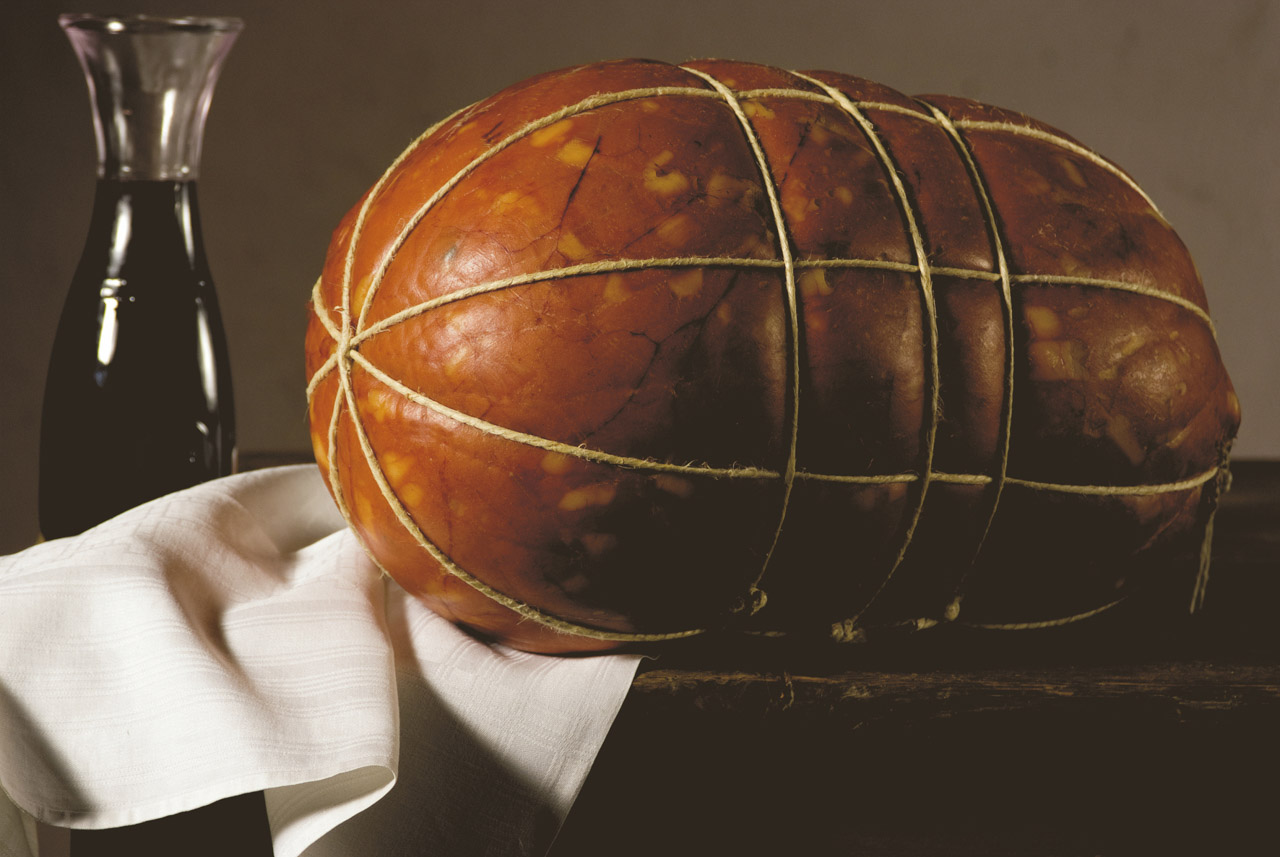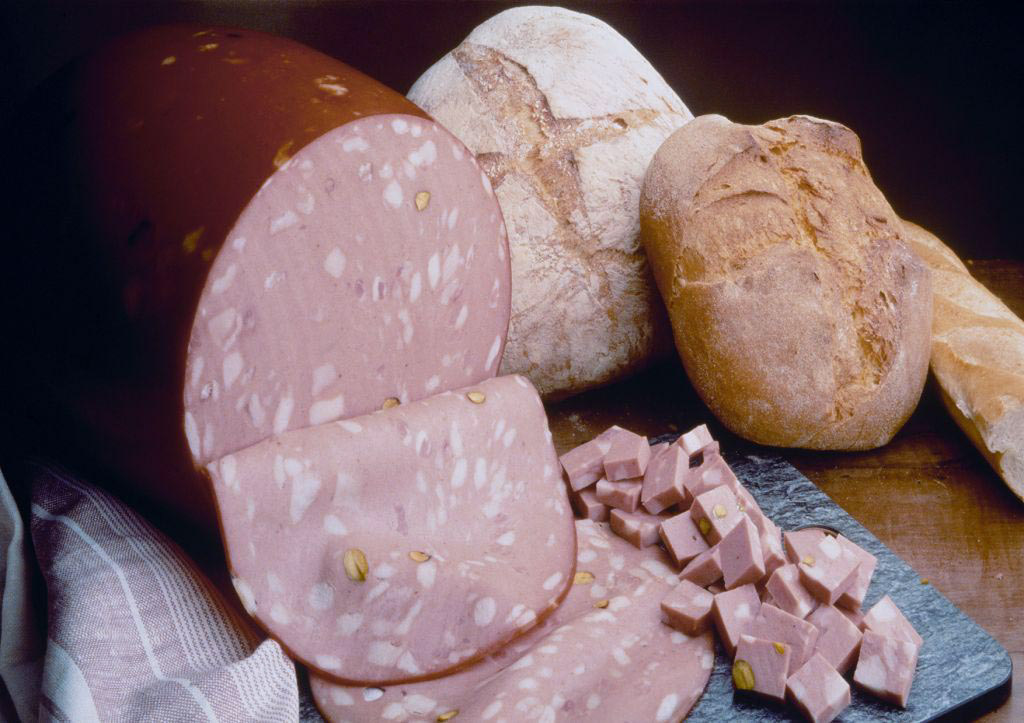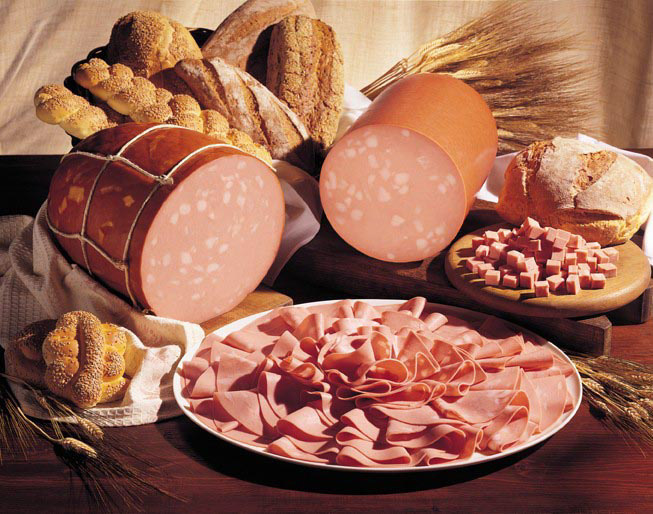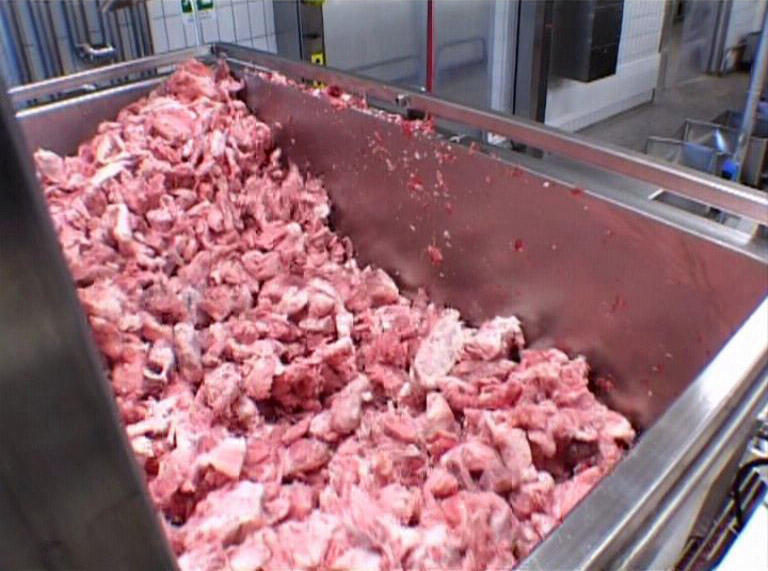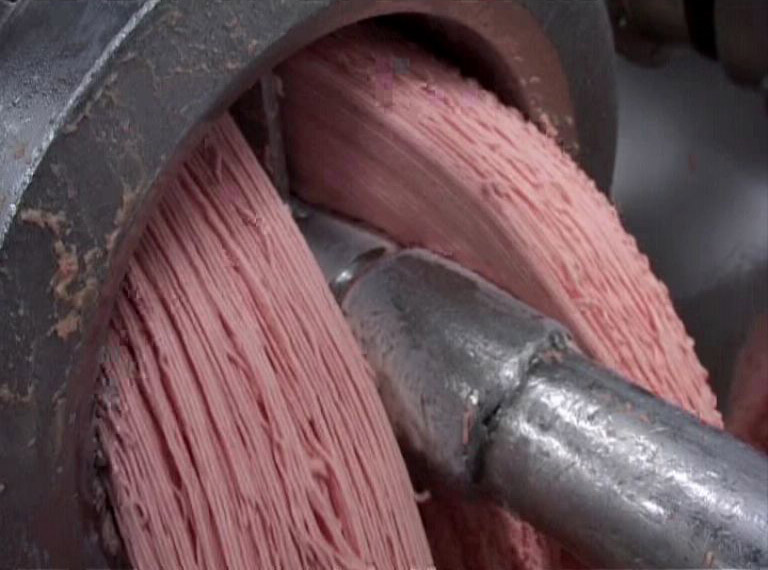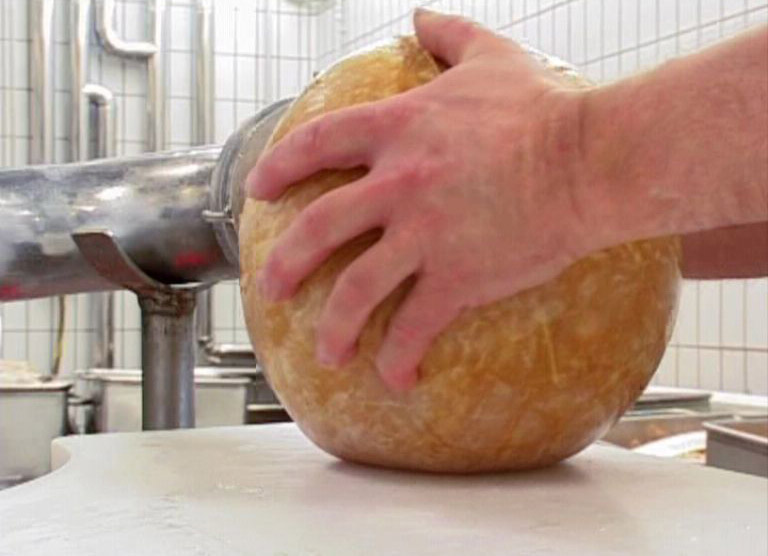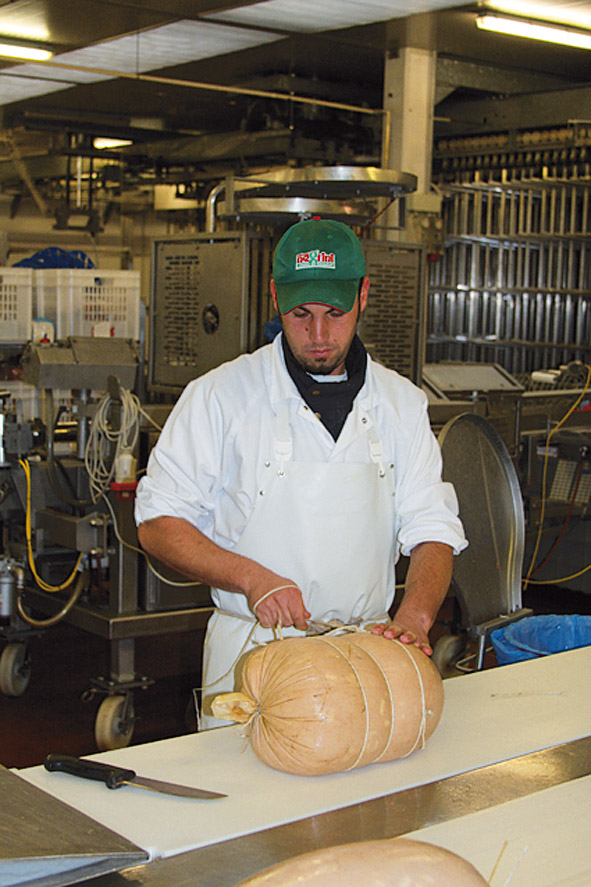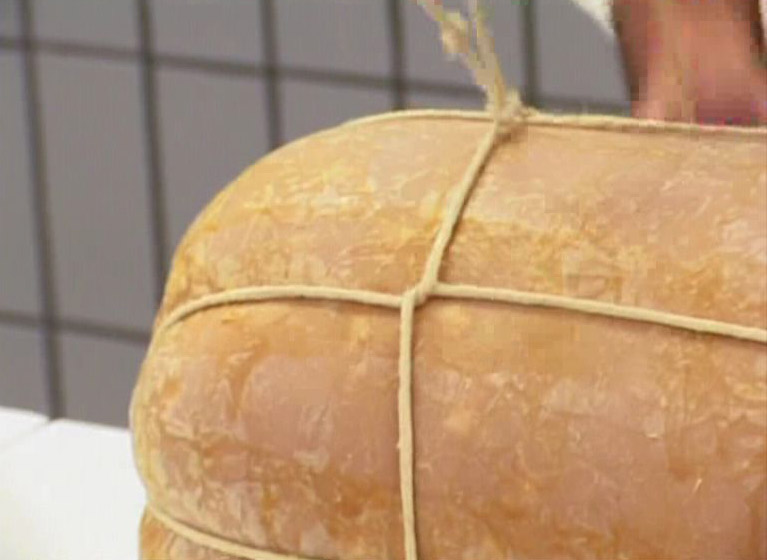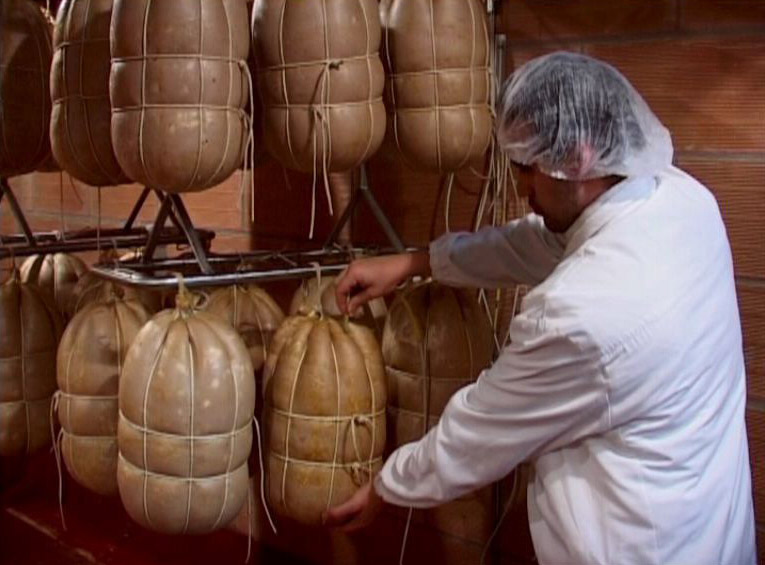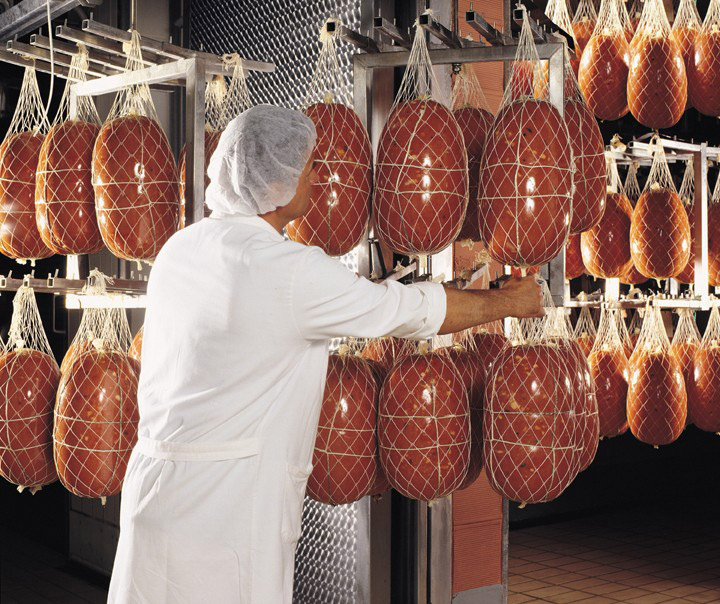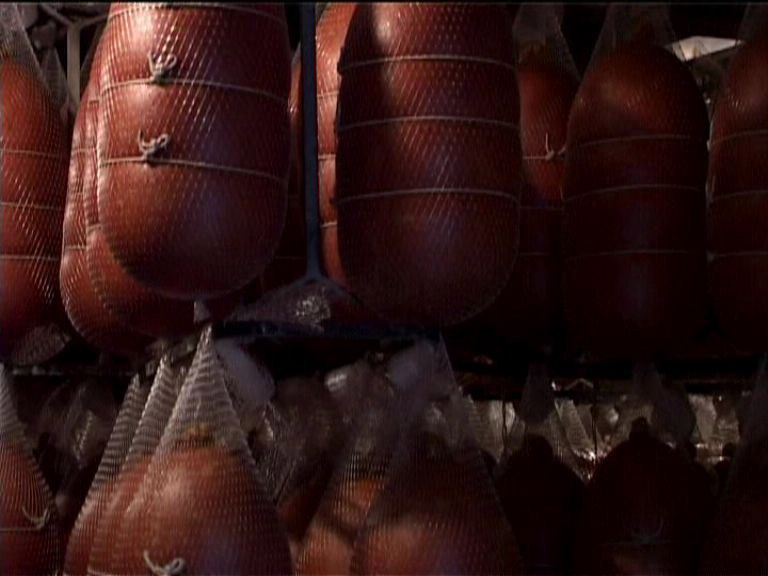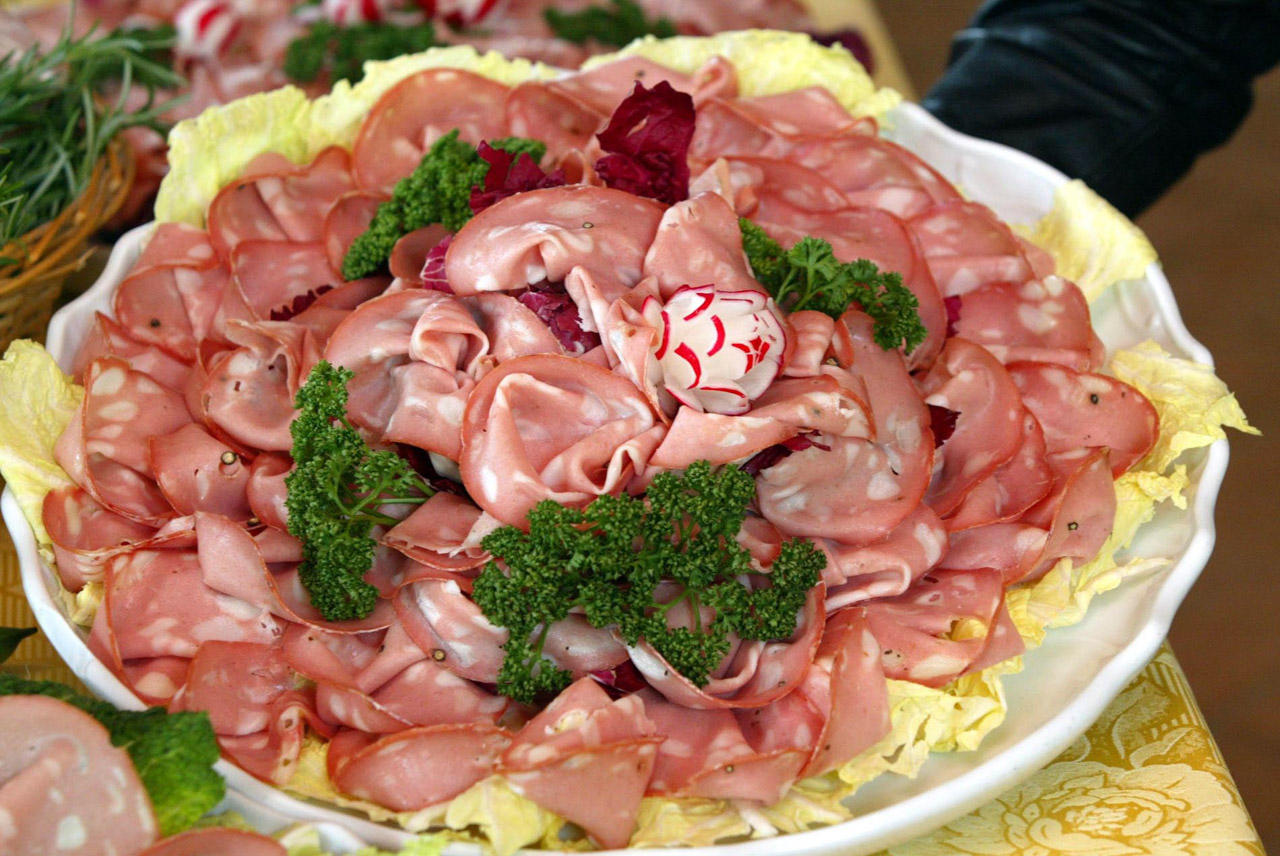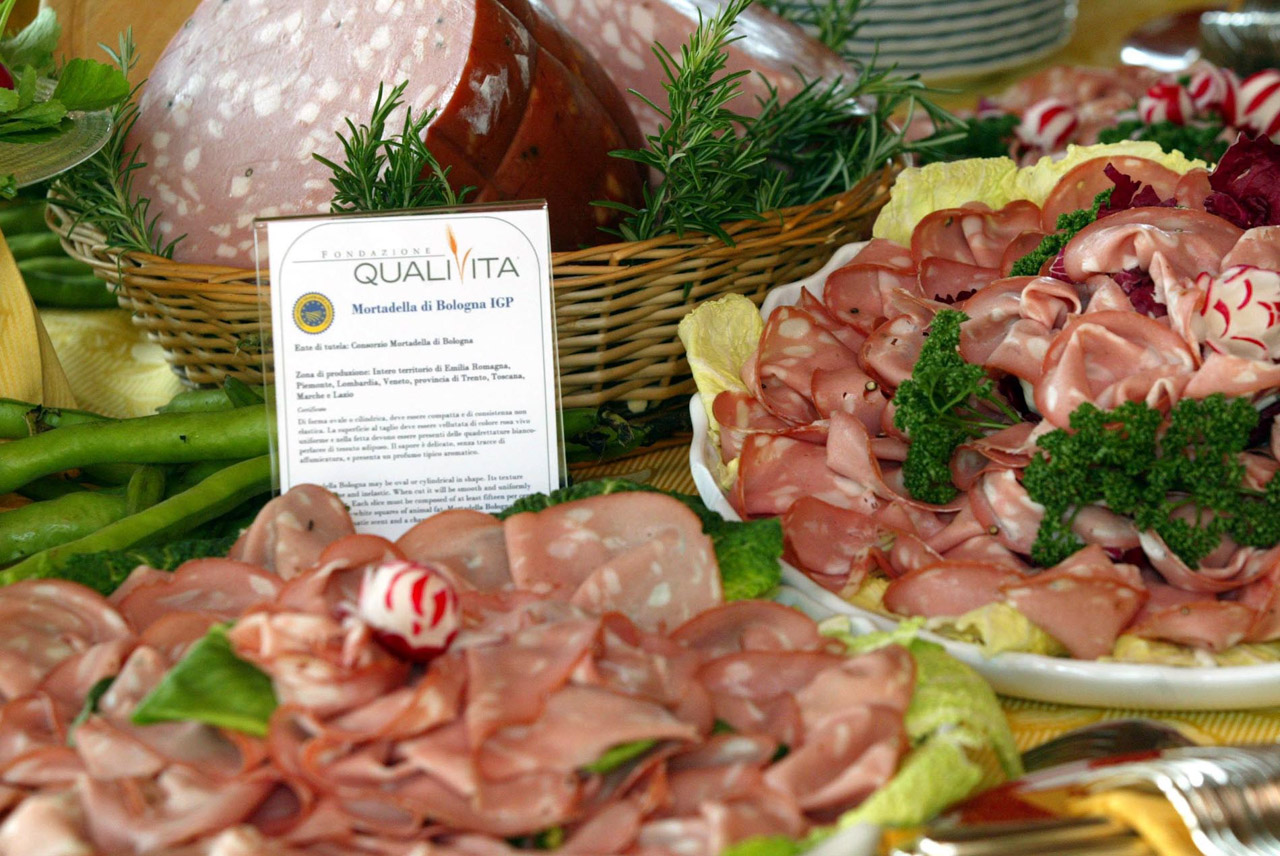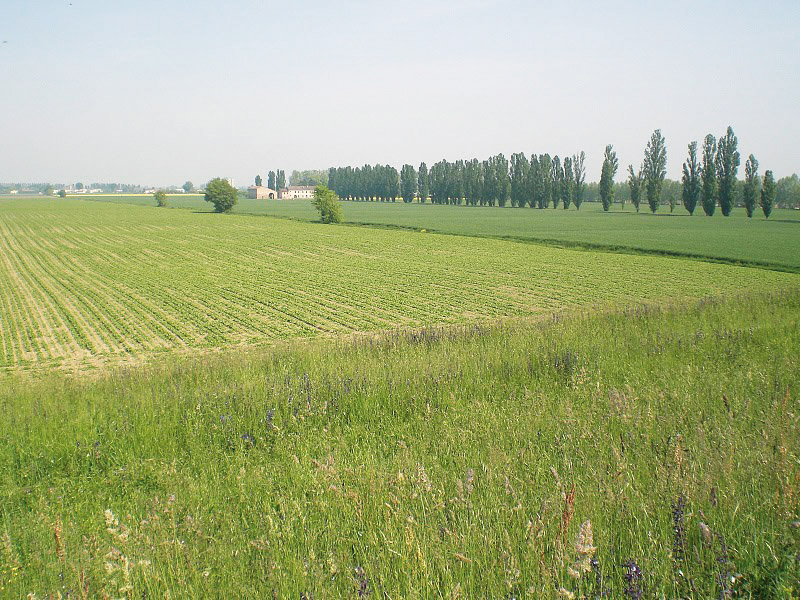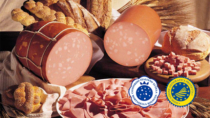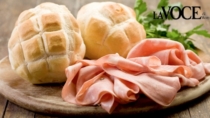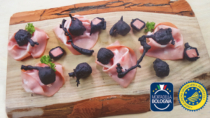Description
Mortadella Bologna PGI is a charcuterie product belonging to the cooked sausage category and is made with a mixture of pork cuts.
Production Area
The production and processing area of Mortadella Bologna PGI is within the regions of Emilia-Romagna, Piedmont, Lombardy, Veneto, Tuscany, The Marches, and Lazio, and in the autonomous Province of Trento, in the Trentino Alto Adige region.
Production Method
The first processing stage consists of the selection of pig meat from the muscular layer and high-quality fat; the latter is mainly taken from pig’s throat and constitutes the so-called “lard spots”. After being coarsely ground, the meat parts are minced mechanically. For the preparation of the lard spots, the fat is diced, heated, washed in water and drained. The other ingredients which must be added are salt and whole pepper, in grains and/or powder, while other natural spices and flavours, as well as pork belly, with the mucous removed, and pork fatback, can be used at the discretion of the producer, who creates their own recipe to characterise the product and obtain the characteristic taste. After the mixture has been mixed in vacuum machines, it is stuffed into natural or synthetic casings and tied. Cooking is the most delicate stage of the process, and takes place in dry air ovens; the centre of the product must reach a minimum temperature of 70°C. Cooling takes place immediately after this stage, until the internal temperature reaches less than 10°C.
Appearance and Flavour
Mortadella Bologna PGI has a cylindrical or oval shape. Its pink colour and slightly spicy, yet intense fragrance, makes it unique among charcuterie products. When sliced, the surface is smooth and soft, and the slice must contain white-pearly white square pieces of fat; it has a delicate taste, without any trace of smoking.
History
The origins of Mortadella Bologna PGI most likely date back to the Etruscan period. The name could derive from the Latin terms murtatum, referring to meat minced with a mortar, or myrtatum, meat stuffed in a casing and seasoned with myrtle berries. A stele from the Roman Empire portraying a man leading seven pigs to pasture and a mortar with a pestle, on display in the Archaeological Museum of Bologna, would seem to support the theory of the name’s Latin origins. Evidence of the link with city of Bologna can be found in the fifteenth century, when the Viscounts of Milan willingly offered the city a fat ox every year, in exchange for fragrant mortadellas. Bologna was also guarantor for the quality of this product, and in 1661 Cardinal Farnese issued a notice that regulated mortadella production, representing one of the first examples of a product specification similar to today’s PDO and PGI marks. The fabrication and application of the seals of guarantee were the responsibility of the Corporazione dei Salaroli, one of the oldest in Bologna, which already had a mortar and pestle for its stem in 1376.
Gastronomy
In order to maintain its qualitative characteristics, Mortadella Bologna PGI should be kept in a cool place, with the right level of humidity. Once cut, the cut end should be covered with cling film to ensure that the product maintains its best characteristics. It is excellent with hot traditional bread, or as an ingredient in many Italian dishes, from the most traditional to the most innovative.
Marketing
The product is marketed as Mortadella Bologna PGI. It is sold whole, in pieces or slices, unpackaged, vacuum-packed or in modified atmosphere packaging.
Distinctive Features
The full and balanced flavour of Mortadella Bologna PGI is the result of the use of prime pork cuts, including the fatty parts: in fact, only gullet fat is selected, the most prestigious adipose tissue, which gives the product its characteristic sweet flavour.






